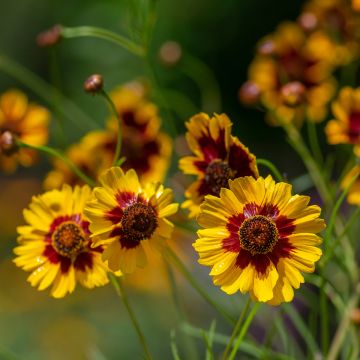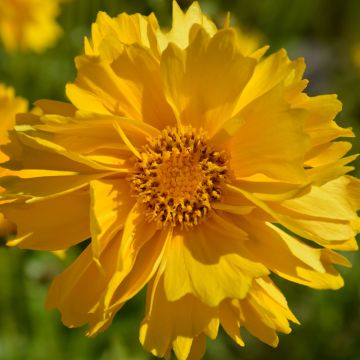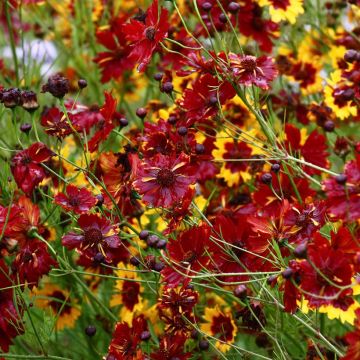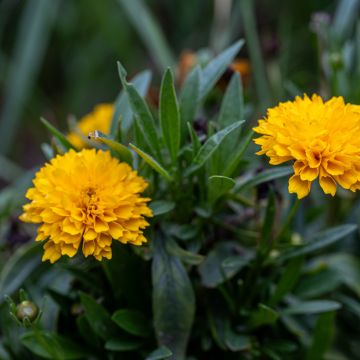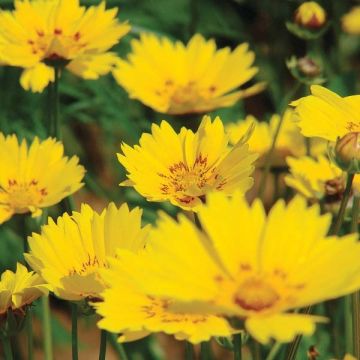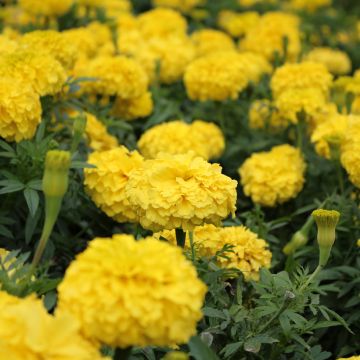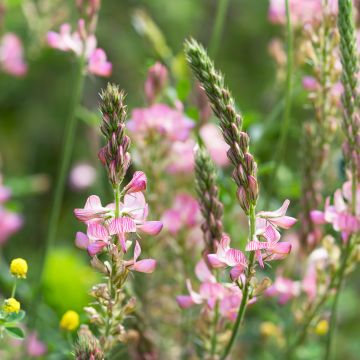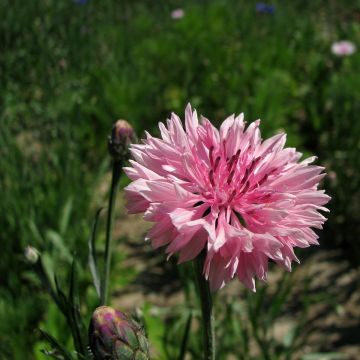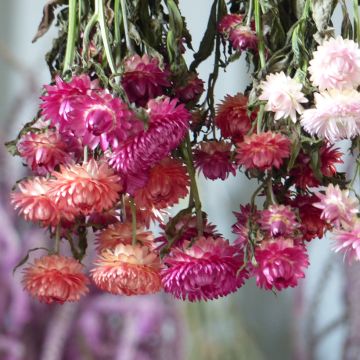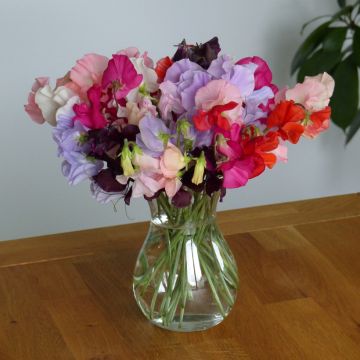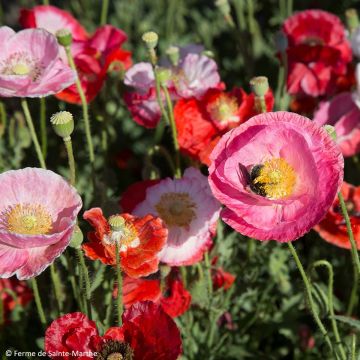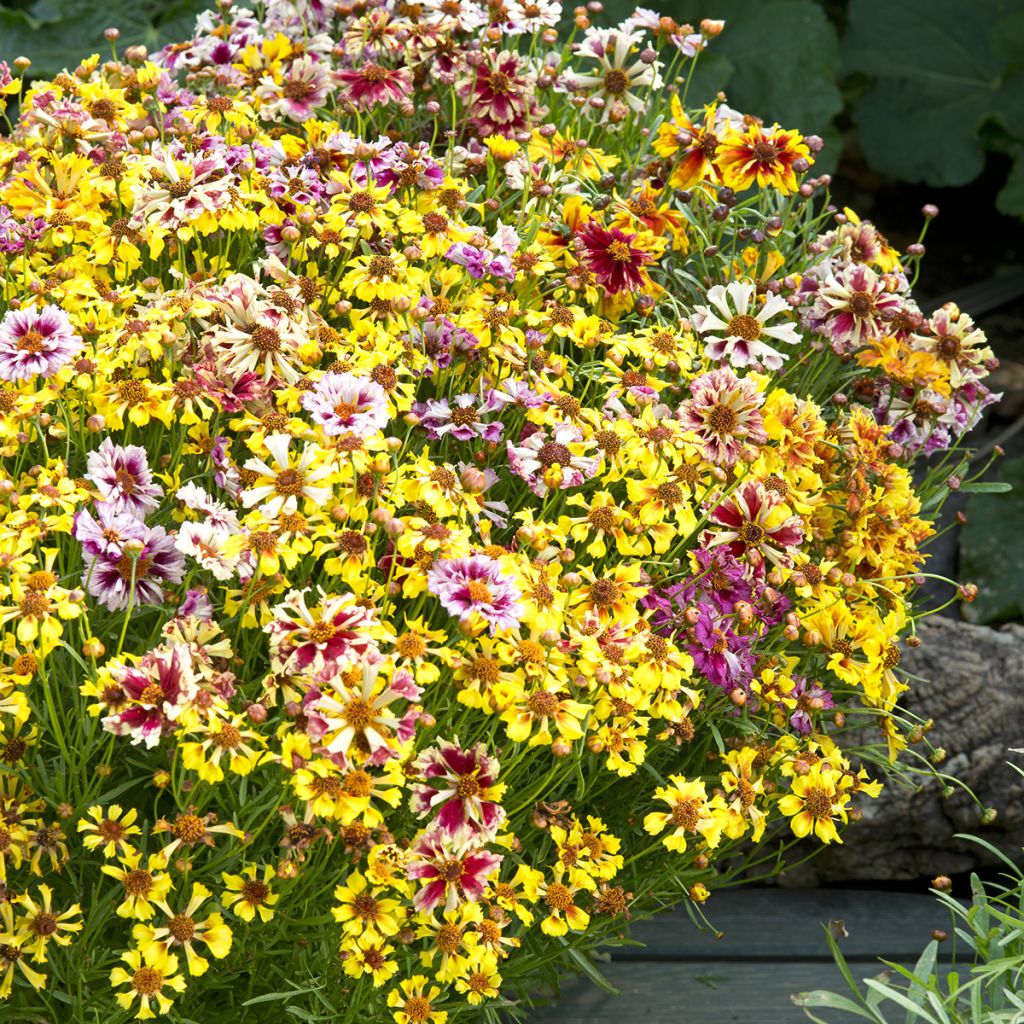

Coreopsis Sea Shells Mix - Tickseed seeds
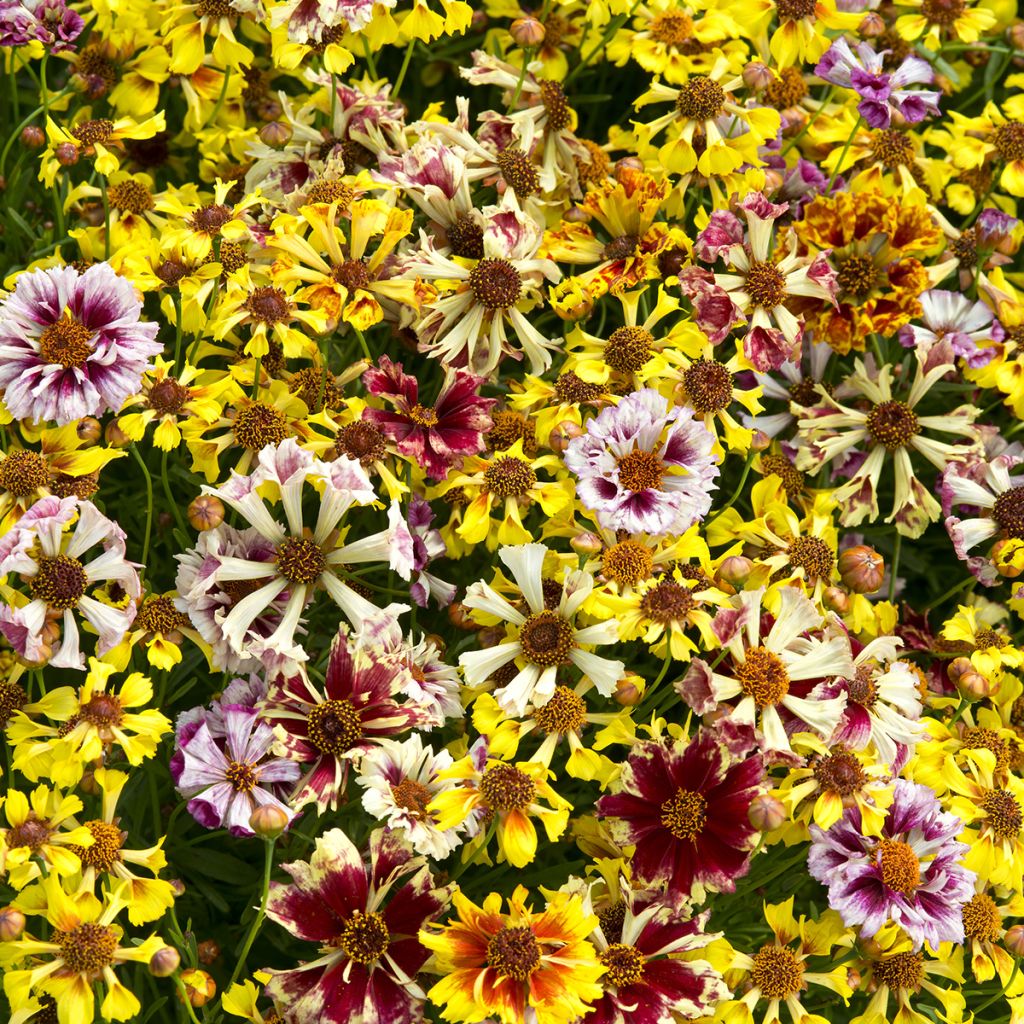

Coreopsis Sea Shells Mix - Tickseed seeds
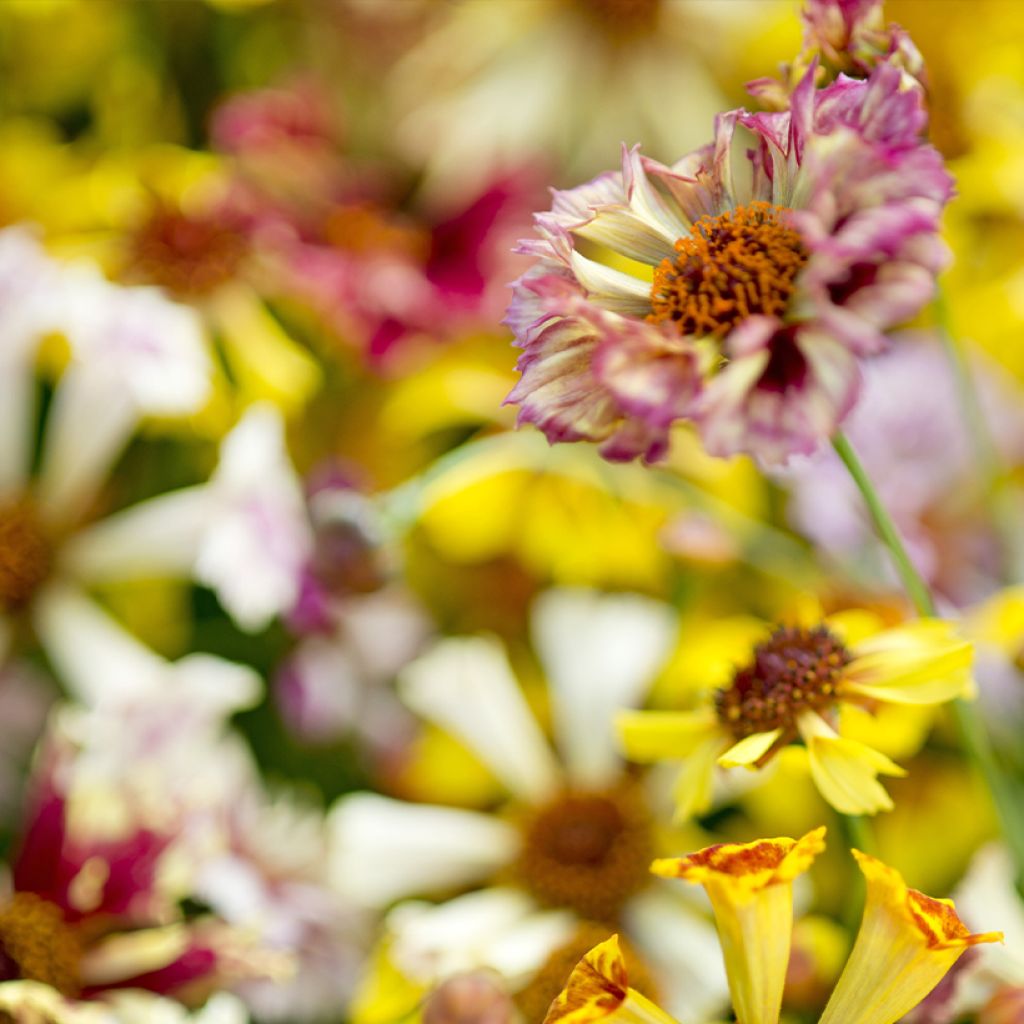

Coreopsis Sea Shells Mix - Tickseed seeds
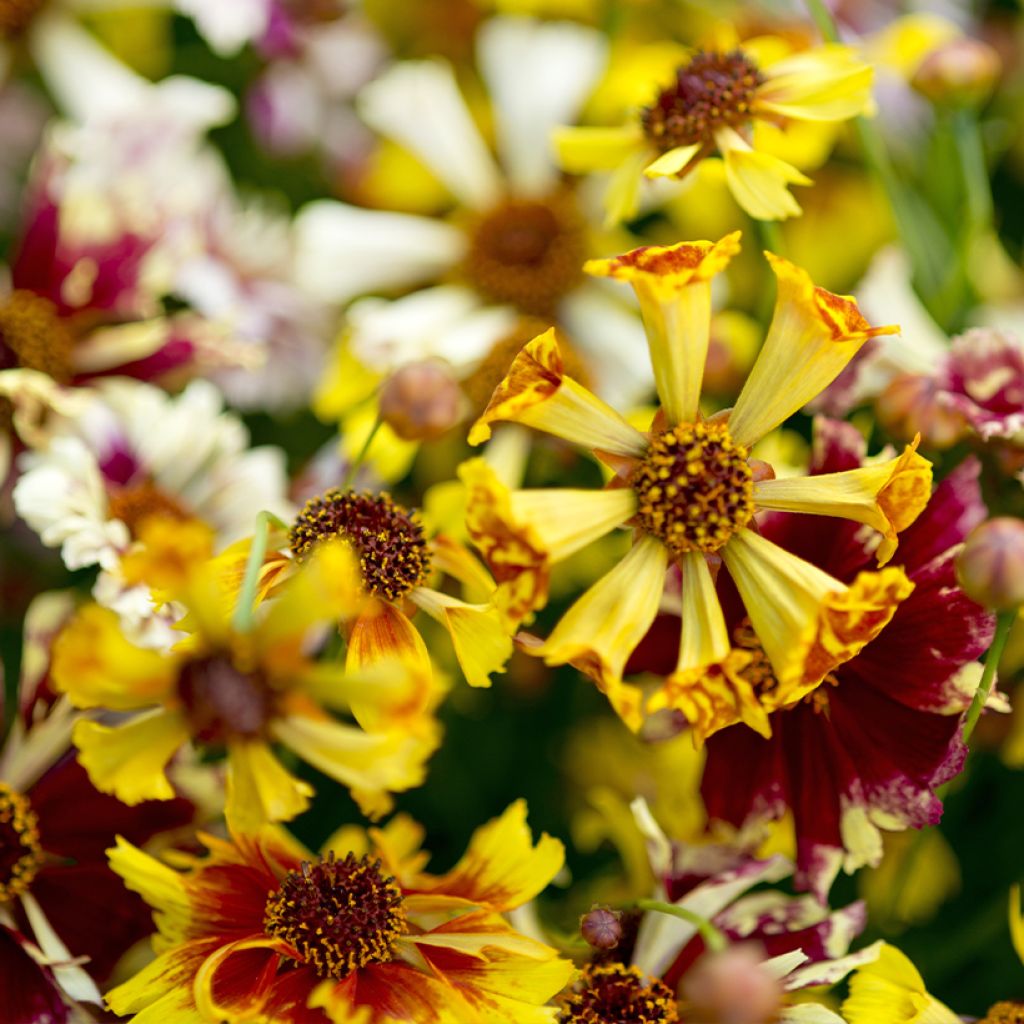

Coreopsis Sea Shells Mix - Tickseed seeds
Coreopsis Sea Shells Mix - Tickseed seeds
Coreopsis Hybrida Incredible ! Sea Shells Mix
Tickseed, Golden Tickseed
This item cannot be shipped to the selected country
Dispatch by letter from €3.90
More information
Schedule delivery date,
and select date in basket
This plant carries a 6 months recovery warranty
More information
We guarantee the quality of our plants for a full growing cycle, and will replace at our expense any plant that fails to recover under normal climatic and planting conditions.
Seed-only orders are dispatched by sealed envelope. The delivery charge for seed-only orders is €3.90.
Does this plant fit my garden?
Set up your Plantfit profile →
Description
The Sea Shells Mix Coreopsis is an annual plant resulting from a long and rigorous horticultural selection. This mix has won the Fleuroselect Innovation Award. Its unusual and fascinating flowers are of the "shell" type, meaning they have tubular ligules. The bicoloured shades they offer are unprecedented: duos of very dark red with cream white, yellow, or pink depending on the plant. This fast-growing and very easy coreopsis will flower all summer, from June to October.
Sea Shells Mix is derived from Coreopsis tinctoria, also known as dyer's coreopsis, a plant that has a strictly annual life cycle. Native to the plains of North America, the species develops clumps of narrow, toothed basal foliage, from which 1m (3ft) tall, slender floral stems rise. They bear yellow flowers spotted with a brown-red disk. This annual coreopsis craves heat and is drought-resistant.
Sea Shells Mix is a mixture of dwarf plants, reaching a height of 45 cm (18in) with equivalent width and abundant multicoloured flowering from June to the first frost. Delicate and airy flowers carried by slender stems seem to hover in the wind above its light foliage. They have an unusual shell-like shape, called with tubular ligules. Each one is bicolored, in a range of dark red, yellow, pale pink, and cream-white tones.
The compact and bushy shape of Sea Shells Mix coreopsis is perfectly suited for flower borders, flower beds, or even pots on the terrace. Plant them in full sun in light and well-drained soil. Pair them with rudbeckias, echinaceas and daylilies. Add the light, solid-coloured flowers of Gaura lindheimeri which bring some calm to this composition, as do beautiful ornamental grasses like Stipa or Carex. A few taller plants like Verbena bonariensis provide some airiness. Also good for dry annual flower beds. It has a good vase life, a few flowering stems of coreopsis mix well with cosmos, zinnias, centaureas... to create beautiful summer bouquets.
The ecological value:
By sowing coreopsis in your garden, you will attract pollinating insects and other beneficial insects, enticed by the scent of their flowers' nectar. This will improve the health of your garden's ecosystem, particularly important for numerous fruits and vegetables. So, plant a few near your vegetable patch.
Report an error about the product description
Coreopsis Sea Shells Mix - Tickseed seeds in pictures


Flowering
Foliage
Plant habit
Botanical data
Coreopsis
Hybrida
Incredible ! Sea Shells Mix
Asteraceae
Tickseed, Golden Tickseed
Coreopsis cardaminifolia, Calliopsis cardaminifolia
Cultivar or hybrid
Other Coreopsis seeds
Planting and care
Broadcast sow Coreopsis in February-March in a tray. Use good quality soil, possibly enriched with compost. Cover the seeds by sprinkling soil on top or vermiculite on top, lightly press down and water generously with a fine rose. Place your pots in the light, without direct sunlight, at a temperature of 20 to 25°C (68 to 77°F).
The seeds will take 21 to 30 days to germinate. Once the plants have reached a height of 10 cm (4in), transplant them into pots. 15 days before their final placement, gradually acclimatise them to a temperature of 15°C (59°F).
By the end of May or the beginning of June, the temperature will be warm enough to plant your young plants in the garden. Choose a sunny location. Add a good shovelful of compost to each planting hole. Space your plants 25 to 30 cm (10 to 12in) apart.
It is possible to sow Coreopsis directly in the garden, but you will have to wait until all risk of frost has passed, around mid-May.
Deadhead regularly to encourage more flowers.
Sowing period
Intended location
This item has not been reviewed yet - be the first to leave a review about it.
Flower seeds
Haven't found what you were looking for?
Hardiness is the lowest winter temperature a plant can endure without suffering serious damage or even dying. However, hardiness is affected by location (a sheltered area, such as a patio), protection (winter cover) and soil type (hardiness is improved by well-drained soil).

Photo Sharing Terms & Conditions
In order to encourage gardeners to interact and share their experiences, Promesse de fleurs offers various media enabling content to be uploaded onto its Site - in particular via the ‘Photo sharing’ module.
The User agrees to refrain from:
- Posting any content that is illegal, prejudicial, insulting, racist, inciteful to hatred, revisionist, contrary to public decency, that infringes on privacy or on the privacy rights of third parties, in particular the publicity rights of persons and goods, intellectual property rights, or the right to privacy.
- Submitting content on behalf of a third party;
- Impersonate the identity of a third party and/or publish any personal information about a third party;
In general, the User undertakes to refrain from any unethical behaviour.
All Content (in particular text, comments, files, images, photos, videos, creative works, etc.), which may be subject to property or intellectual property rights, image or other private rights, shall remain the property of the User, subject to the limited rights granted by the terms of the licence granted by Promesse de fleurs as stated below. Users are at liberty to publish or not to publish such Content on the Site, notably via the ‘Photo Sharing’ facility, and accept that this Content shall be made public and freely accessible, notably on the Internet.
Users further acknowledge, undertake to have ,and guarantee that they hold all necessary rights and permissions to publish such material on the Site, in particular with regard to the legislation in force pertaining to any privacy, property, intellectual property, image, or contractual rights, or rights of any other nature. By publishing such Content on the Site, Users acknowledge accepting full liability as publishers of the Content within the meaning of the law, and grant Promesse de fleurs, free of charge, an inclusive, worldwide licence for the said Content for the entire duration of its publication, including all reproduction, representation, up/downloading, displaying, performing, transmission, and storage rights.
Users also grant permission for their name to be linked to the Content and accept that this link may not always be made available.
By engaging in posting material, Users consent to their Content becoming automatically accessible on the Internet, in particular on other sites and/or blogs and/or web pages of the Promesse de fleurs site, including in particular social pages and the Promesse de fleurs catalogue.
Users may secure the removal of entrusted content free of charge by issuing a simple request via our contact form.
The flowering period indicated on our website applies to countries and regions located in USDA zone 8 (France, the United Kingdom, Ireland, the Netherlands, etc.)
It will vary according to where you live:
- In zones 9 to 10 (Italy, Spain, Greece, etc.), flowering will occur about 2 to 4 weeks earlier.
- In zones 6 to 7 (Germany, Poland, Slovenia, and lower mountainous regions), flowering will be delayed by 2 to 3 weeks.
- In zone 5 (Central Europe, Scandinavia), blooming will be delayed by 3 to 5 weeks.
In temperate climates, pruning of spring-flowering shrubs (forsythia, spireas, etc.) should be done just after flowering.
Pruning of summer-flowering shrubs (Indian Lilac, Perovskia, etc.) can be done in winter or spring.
In cold regions as well as with frost-sensitive plants, avoid pruning too early when severe frosts may still occur.
The planting period indicated on our website applies to countries and regions located in USDA zone 8 (France, United Kingdom, Ireland, Netherlands).
It will vary according to where you live:
- In Mediterranean zones (Marseille, Madrid, Milan, etc.), autumn and winter are the best planting periods.
- In continental zones (Strasbourg, Munich, Vienna, etc.), delay planting by 2 to 3 weeks in spring and bring it forward by 2 to 4 weeks in autumn.
- In mountainous regions (the Alps, Pyrenees, Carpathians, etc.), it is best to plant in late spring (May-June) or late summer (August-September).
The harvesting period indicated on our website applies to countries and regions in USDA zone 8 (France, England, Ireland, the Netherlands).
In colder areas (Scandinavia, Poland, Austria...) fruit and vegetable harvests are likely to be delayed by 3-4 weeks.
In warmer areas (Italy, Spain, Greece, etc.), harvesting will probably take place earlier, depending on weather conditions.
The sowing periods indicated on our website apply to countries and regions within USDA Zone 8 (France, UK, Ireland, Netherlands).
In colder areas (Scandinavia, Poland, Austria...), delay any outdoor sowing by 3-4 weeks, or sow under glass.
In warmer climes (Italy, Spain, Greece, etc.), bring outdoor sowing forward by a few weeks.

































